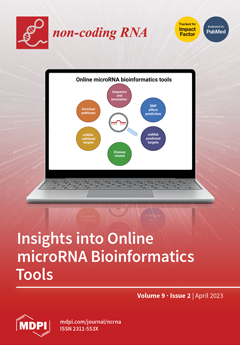Open AccessFeature PaperArticle
Immunoregulatory Biomarkers of the Remission Phase in Type 1 Diabetes: miR-30d-5p Modulates PD-1 Expression and Regulatory T Cell Expansion
by
Laia Gomez-Muñoz, David Perna-Barrull, Marta Murillo, Maria Pilar Armengol, Marta Alcalde, Marti Catala, Silvia Rodriguez-Fernandez, Sergi Sunye, Aina Valls, Jacobo Perez, Raquel Corripio and Marta Vives-Pi
Cited by 2 | Viewed by 3439
Abstract
The partial remission (PR) phase of type 1 diabetes (T1D) is an underexplored period characterized by endogenous insulin production and downmodulated autoimmunity. To comprehend the mechanisms behind this transitory phase and develop precision medicine strategies, biomarker discovery and patient stratification are unmet needs.
[...] Read more.
The partial remission (PR) phase of type 1 diabetes (T1D) is an underexplored period characterized by endogenous insulin production and downmodulated autoimmunity. To comprehend the mechanisms behind this transitory phase and develop precision medicine strategies, biomarker discovery and patient stratification are unmet needs. MicroRNAs (miRNAs) are small RNA molecules that negatively regulate gene expression and modulate several biological processes, functioning as biomarkers for many diseases. Here, we identify and validate a unique miRNA signature during PR in pediatric patients with T1D by employing small RNA sequencing and RT-qPCR. These miRNAs were mainly related to the immune system, metabolism, stress, and apoptosis pathways. The implication in autoimmunity of the most dysregulated miRNA, miR-30d-5p, was evaluated in vivo in the non-obese diabetic mouse. MiR-30d-5p inhibition resulted in increased regulatory T cell percentages in the pancreatic lymph nodes together with a higher expression of
CD200. In the spleen, a decrease in PD-1
+ T lymphocytes and reduced
PDCD1 expression were observed. Moreover, miR-30d-5p inhibition led to an increased islet leukocytic infiltrate and changes in both effector and memory T lymphocytes. In conclusion, the miRNA signature found during PR shows new putative biomarkers and highlights the immunomodulatory role of miR-30d-5p, elucidating the processes driving this phase.
Full article
►▼
Show Figures






